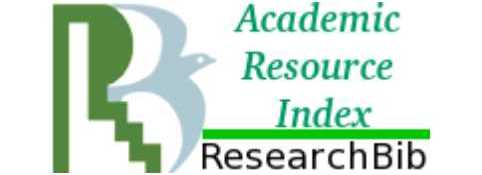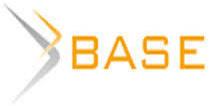От STM до GPT: сравнительный анализ методов тематического моделирования на материале предметной области «ИИ в стоматологии»
Исследование представляет собой анализ научных аннотаций в области применения искусственного интеллекта (ИИ) в стоматологии с использованием различных методов тематического моделирования. Мы сформировали и проанализировали корпус из 3170 аннотаций научных статей, опубликованных в 2019–2025 гг. в изданиях, индексируемых в базах данных Dimensions и Scopus. Были сравнены три подхода к тематическому моделированию: структурное тематическое моделирование (STM) вероятностная модель, позволяющая анализировать временные тенденции; кластеризация на основе эмбеддингов с использованием алгоритма Leiden — стабильная альтернатива BERTopic; моделирование с использованием GPT-4o без обучения модели. Для оценки качества тем была применена совокупность метрик. Показано, что алгоритм STM дает наиболее компактную и чётко разделённую структуру тем; GPT оказался эффективным для создания названий тем и кратких описаний, но показал большее тематическое перекрытие и менее чёткие границы между темами. Мы также выполнили согласованное выравнивание тем в едином GPT-пространстве и выявили как стабильные, так и специфичные для моделей темы, а также общие временные тренды. Полученные результаты подчёркивают ценность комбинирования классических вероятностных моделей с возможностями LLM для достижения оптимального качества тематического моделирования. Хотя GPT-4o повышает интерпретируемость, его не следует использовать как единственный метод для анализа тем. Предложенный гибридный подход является масштабируемой и воспроизводимой стратегией для проведения обзоров литературы в быстро развивающихся областях исследований.

Литвинова Т. А., Ипполитов Ю. А., Середин П. В. От STM до GPT: сравнительный анализ методов тематического моделирования на материале предметной области «ИИ в стоматологии» // Научный результат. Вопросы теоретической и прикладной лингвистики. 2025. Т. 11. № 3. C. 85–121.


















Пока никто не оставил комментариев к этой публикации.
Вы можете быть первым.
Allani H. Multidisciplinary Applications of AI in Dentistry: Bibliometric Review / H. Allani, A. T. Santos, H. Ribeiro-Vidal // Applied Sciences. 2024. Т. 14, № 17. Ст. 7624. https://doi.org/10.3390/app14177624
Benz P. Mapping the unseen in practice: comparing latent Dirichlet allocation and BERTopic for navigating topic spaces / P. Benz, C. Pradier, D. Kozlowski [и др.] // Scientometrics. 2025. Ранний онлайн-доступ (10.06.2025). https://doi.org/10.1007/s11192-025-05339-6
Blei D. M. Latent Dirichlet Allocation / D. M. Blei, A. Y. Ng, M. I. Jordan // Journal of Machine Learning Research. 2003. Т. 3. С. 993–1022.
Büttner M. Natural Language Processing: Chances and Challenges in Dentistry / M. Büttner, U. Leser, L. Schneider, F. Schwendicke // Journal of Dentistry. 2024. Т. 141. Ст. 104796. https://doi.org/10.1016/j.jdent.2023.104796
Cosola D. M. Artificial intelligence in dentistry: a narrative review of applications, challenges, and future directions / D. M. Cosola, A. Ballini, F. A. Prencipe [и др.] // Minerva Dent Oral Sci. 2025. Ранний онлайн-доступ (18.06.2025). https://doi.org/10.23736/S2724-6329.25.05217-9(In English)
de Magalhães A. A. Advancements in Diagnostic Methods and Imaging Technologies in Dentistry: A Literature Review of Emerging Approaches / A. A. de Magalhães, A. T. Santos // Journal of Clinical Medicine. 2025. Т. 14, № 4. Ст. 1277. https://doi.org/10.3390/jcm14041277
Grootendorst M. BERTopic: Neural topic modeling with a class-based TF-IDF procedure / M. Grootendorst // arXiv preprint arXiv:2203.05794. URL: https://arxiv.org/abs/2203.05794 (дата обращения: 22.08.2025).
Hu J. Advances in hydrological research in China over the past two decades: Insights from advanced large language model and topic modeling / J. Hu, C. Miao, Y. Wu, J. Su // Fundamental Research. 2025. Ранний онлайн-доступ (10.05.2025). https://doi.org/10.1016/j.fmre.2025.05.002
Islam K. M. S. Contextual Embedding-based Clustering to Identify Topics for Healthcare Service Improvement / K. M. S. Islam // arXiv:2504.14068. URL: https://arxiv.org/abs/2504.14068 (дата обращения: 22.08.2025). https://doi.org/10.48550/arXiv.2504.14068
Jung H. S. Expansive data, extensive model: Investigating discussion topics around LLM through unsupervised machine learning in academic papers and news / H. S. Jung, H. Lee, Y. S. Woo [и др.] // PLOS ONE. 2024. Т. 19, № 5. Ст. e0304680. https://doi.org/10.1371/journal.pone.0304680
Kozlowski D. Generative AI for automatic topic labelling / D. Kozlowski // arXiv:2408.07003. URL: https://arxiv.org/abs/2408.07003 (дата обращения: 22.08.2025). https://doi.org/10.48550/arxiv.2408.07003
Lee V. V. Harnessing ChatGPT for Thematic Analysis: Are We Ready? / V. V. Lee, S. C. C. van der Lubbe, L. H. Goh, J. M. Valderas // Journal of Medical Internet Research. 2024. Т. 26. Ст. e54974. https://doi.org/10.2196/54974
Lee Y. Prompt engineering in ChatGPT for literature review: practical guide exemplified with studies on white phosphors / Y. Lee, J. H. Oh, D. Lee [и др.] // Sci Rep. 2025. Т. 15. Ст. 15310. https://doi.org/10.1038/s41598-025-99423-9
Mahmoud M. Predicting Software Engineering Trends from Scientific Papers with a Combined Framework of Clustering and Topic Modeling / M. Mahmoud, M. Mashaly, A.-E. Mervat // Proc. 2025 15th International Conference on Electrical Engineering (ICEENG). 2025. С. 1–6. https://doi.org/10.1109/ICEENG64546.2025.11031347
Mathis W. S. Inductive thematic analysis of healthcare qualitative interviews using open-source large language models: How does it compare to traditional methods? / W. S. Mathis, S. Zhao, N. Pratt [и др.] // Computer Methods and Programs in Biomedicine. 2024. Т. 255. Ст. 108356.https://doi.org/10.1016/j.cmpb.2024.108356
Meng F. Demand-side energy management reimagined: A comprehensive literature analysis leveraging large language models / F. Meng, Z. Lu, X. Li [и др.] // Energy. 2024. Т. 291.
Ст. 130303. https://doi.org/10.1016/j.energy.2024.130303
Mu Y. Addressing topic granularity and hallucination in large language models for topic modelling / Y. Mu, P. Bai, K. Bontcheva, X. Song // arXiv:2405.00611v1. URL: https://arxiv.org/html/2405.00611v1 (дата обращения: 22.08.2025).
Mu Y. Large language models offer an alternative to the traditional approach of topic modelling / Y. Mu, C. Dong, K. Bontcheva, X. Song // Proc. LREC-COLING 2024. 2024. С. 10160–10171.
Ogunleye B. Topic modelling through the bibliometrics lens and its technique / B. Ogunleye, B. S. Lancho Barrantes, K. I. Zakariyyah [и др.] // Artificial Intelligence Review. 2025. Т. 58. Ст. 74. https://doi.org/10.1007/s10462-024-11011-x
Pham C. M. TopicGPT: A Prompt-based Topic Modeling Framework / C. M. Pham, A. Hoyle, S. Sun // Proc. of the 2024 Conference of the North American Chapter of the Association for Computational Linguistics: Human Language Technologies (NAACL-HLT 2024). 2024. С. 2956–2984. Mexico City. Association for Computational Linguistics.
Reuter A. Gptopic: Dynamic and interactive topic representations / A. Reuter, A. Thielmann, C. Weisser [и др.] // arXiv:2403.03628. URL: https://arxiv.org/abs/2403.03628 (дата обращения: 22.08.2025).
Riaz A. Exploring topic modelling: a comparative analysis of traditional and transformer-based approaches with emphasis on coherence and diversity / A. Riaz, O. Abdulkader, M. J. Ikram, J. Sadaqat // International Journal of Electrical and Computer Engineering (IJECE). 2025. Т. 15, № 2. С. 1933–1948. http://doi.org/10.11591/ijece.v15i2.pp1933-1948
Roberts M. E. STM: An R package for structural topic models / M. E. Roberts, B. M. Stewart, D. Tingley // Journal of Statistical Software. 2019. Т. 91, № 2. С. 1–40. https://doi.org/10.18637/jss.v091.i02
Şakar S. Research Topics and Trends in Gifted Education: A Structural Topic Model / S. Şakar, S. Tan // Gifted Child Quarterly. 2025. Т. 69, № 1. С. 68–84. https://doi.org/10.1177/0016986224128504
Sbalchiero S. Topic modeling, long texts and the best number of topics. Some problems and solutions / S. Sbalchiero, M. Eder // Quality & Quantity. 2020. Т. 54. С. 1095–1108. https://doi.org/10.1007/s11135-020-00976-w
Shapurian G. Large Language Models and Knowledge Graphs for Astronomical Entity Disambiguation / G. Shapurian // arXiv:2406.11400. URL: https://arxiv.org/pdf/2406.11400 (дата обращения: 22.08.2025).
Sharma A. DeTAILS: Deep Thematic Analysis with Iterative LLM Support / A. Sharma, J. R. Wallace // Proc. of the 7th ACM Conference on Conversational User Interfaces (CUI ’25). 2025. Article 28. С. 1–7. https://doi.org/10.1145/3719160.3735657
Shirani M. Trends and Classification of Artificial Intelligence Models Utilized in Dentistry: A Bibliometric Study / M. Shirani // Cureus. 2025. Т. 17, № 4. Ст. e81836. https://doi.org/10.7759/cureus.81836
Silveira L. Cone Beam Computed Tomography and Artificial Intelligence. Where We Are? / L. Silveira // Rev Cient Odontol. 2024. Т. 12, № 4. Ст. e214. https://doi.org/10.21142/2523-2754-1204-2024-214
Tarek A. Query-Based Topic Modeling and Trend Analysis in Scientific Literature / A. Tarek, M. Mahmoud, B. Afifi [и др.] // 2024 International Conference on Microelectronics (ICM). Doha, Qatar. 2024. С. 1–6. https://doi.org/10.1109/ICM63406.2024.10815706
Torres J. PROMPTHEUS: A Human-Centered Pipeline to Streamline Systematic Literature Reviews with Large Language Models / J. Torres, C. Mulligan, J. Jorge, C. Moreira // Information. 2025. Т. 16, № 5. Ст. 420. https://doi.org/10.3390/info16050420
Wu X. A survey on neural topic models: Methods, applications, and challenges / X. Wu, T. Nguyen, A. Luu // Artificial Intelligence Review. 2024. Т. 57, № 18. С. 1–30. https://doi.org/10.1007/s10462-023-10661-7
Xie B. Artificial intelligence in dentistry: a bibliometric analysis from 2000 to 2023 / B. Xie, D. Xu, X. Q. Zou [и др.] // Journal of Dental Sciences. 2024. Т. 19. С. 1722–1733. https://doi.org/10.1016/j.jds.2023.10.025
Zatt F. P. Artificial intelligence applications in dentistry: a bibliometric review with an emphasis on computational research trends within the field / F. P. Zatt, A. O. Rocha, L. M. Anjos [и др.] // Journal of the American Dental Association. 2024. Т. 155, № 9. С. 755–764. https://doi.org/10.1016/j.adaj.2024.05.013
Исследование выполнено в Воронежском государственном университете при поддержке Российского научного фонда, грант № 23-15-00060.